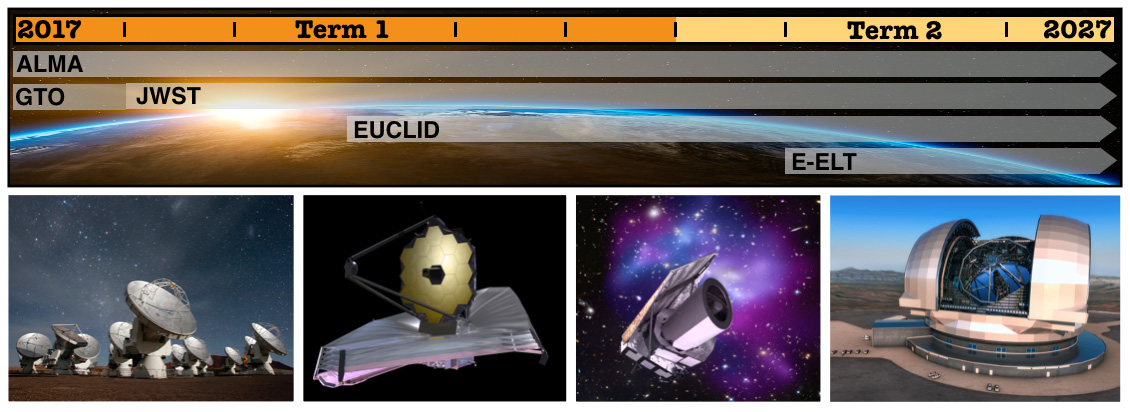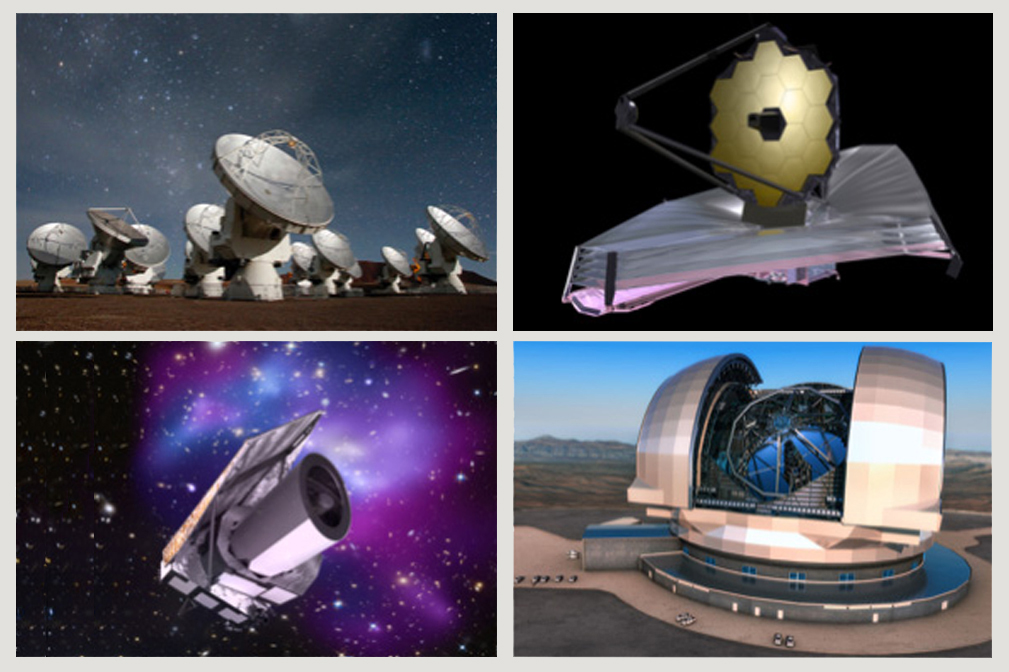People have argued endlessly over what really happened at the dawn of the universe. But until now, no one could ever claim they’d seen it. As part of the new Cosmic Dawn Center, UConn astronomer Kate Whitaker might just get a chance to settle some of those arguments for good.
The Cosmic Dawn Center (DAWN) will gather data from four new telescopes: the Atacama Large Millimeter Array (ALMA) in Chile, the James Webb Space Telescope, the Euclid space mission to map the geometry of the dark universe, and the European-Extremely Large Telescope (E-ELT).

Whitaker will get first crack at analyzing data from the four new eyes on the sky, and UConn students working with her will get to as well. DAWN will bring together experts in both observational astronomy and theory to do cutting-edge science related to the formation of the first galaxies. Whitaker’s special interest is understanding how and why the most massive galaxies in the universe existed for such a short period of time.
“It is puzzling how these massive beasts of the cosmos experience such a rapid formation and ultimate death at such early times, when the fuel for new star formation is still so abundant,” Whitaker says. Current telescopes cannot show enough detail to support the various models astronomers have proposed to explain the giant galaxies’ early demise; the new telescopes coming online will change all that.
DAWN will receive about $11 million over 10 years from the Danish National Research Foundation and will be located at the Niels Bohr Institute at the University of Copenhagen. Whitaker is one of six “associate team members,” who all maintain their regular research positions at their own institutions outside of Denmark but commit to spending extended periods at DAWN in the summers, including co-supervising students and post-docs, including some from UConn. Eight other institutions are involved. DAWN’s scientists will start analyzing data in September, and Whitaker plans to travel to Copenhagen with her UConn students for the first time in summer 2018.



